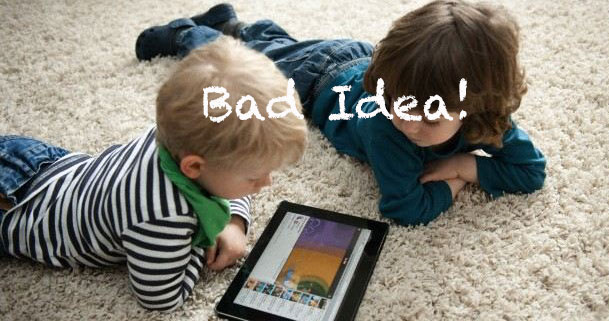
Above: The equivalent of a -6.00 diopter lens, in negative stimulus.
Welcome, [s2Get user_field=”first_name” /].
I’m so glad you made it here. Child myopia is entirely avoidable, and today’s profit-minded optometry practice does a great deal of potential harm to your child’s future well-being. Don’t be mad at the optometrist. They are no different from a McDonalds franchise owner. You just didn’t realize that walking into that shop was the eyesight health equivalent of walking into a fast-food restaurant.
Wrong place, wrong time.
And since you are here after reading my lengthy e-mail explainers, you already know that a) myopia is environmentally created, and b) can be prevented. Now it’s on to the how part. To that end, let me give you one piece of really important advice, right from the start.
Start with the adult program first.
Here’s why: Children are fundamentally different from adults, in that they don’t care about abstract notions, like their future well-being.
You can conceptualize past and future, they can’t. So when you go to get your eyesight back, I can focus on the technical aspects, on strategies and process, without worrying all too much about your motivation. (a little bit I do worry about that also) But will your child brush its teeth, without being prompted? Maybe yours. Mine don’t. This is why we have a child program, separate from the adult program.
But you need both.
The adult program explains a whole lot more of the tools and details, which we don’t cover again separately in the child program. For you to help your child, you do want first hand experience. It makes a tremendous difference. So I set up the programs to have the tools in the adult program, and then the things that apply specifically to children, here in the child program. Make sense?
Here we deal a lot in how to engage your child in the process. We talk about the things that wouldn’t work with a child, straight from the adult program. To succeed here, you have to make the process fun, not a punishment. Engaging, not tedious. You have to know when to take a break, when to focus on prevention, when to push for improvement. It’s quite a bit more challenging than working with adults, and it took me years to get it right.
I spent over 350,000 USD on child therapists and child psychologists, working out behavioral aspects and modeling my approach for the child’s mind. I don’t mention any of this before your sign-up, because I didn’t want to oversell. But it’s true, it took me years and a whole lot of child psychology experts to work out this program. That’s why it’s a bit more expensive. (that and it includes the adult program as well)
Age plays a big role.
A three year old is a different story than an 8 year old. We can’t get into nearly as much stimulus activity with the very young ones. But the sooner you know what drives myopia, how to recognize bad habits, how to build better ones, the better. The sooner you get into it, the less myopia will happen in your child’s eyes. The sooner you know that minus lenses are a huge problem, the less likely you’ll get sucked into the optometrist for-profit medical advice.
So let’s ease into this. Take the adult program first, at least the first 4 or so session groups. Make sense of all that, ask me questions in the forum, quality over get-there-quick. Trust me on that, better do this in measured doses than rush and get nowhere. Ready? Head over to the adult program, and take a look at the great things I have ready, waiting for you: BackTo20/20 Main Program Page
Cheers,
-Jake
P.S.: Remember, you have lifetime access. No rush, but do make it a habit to get at least 2-3 sessions a week into your schedule.
Session: Audio Track
pending …
Session: Video Stream
pending …
